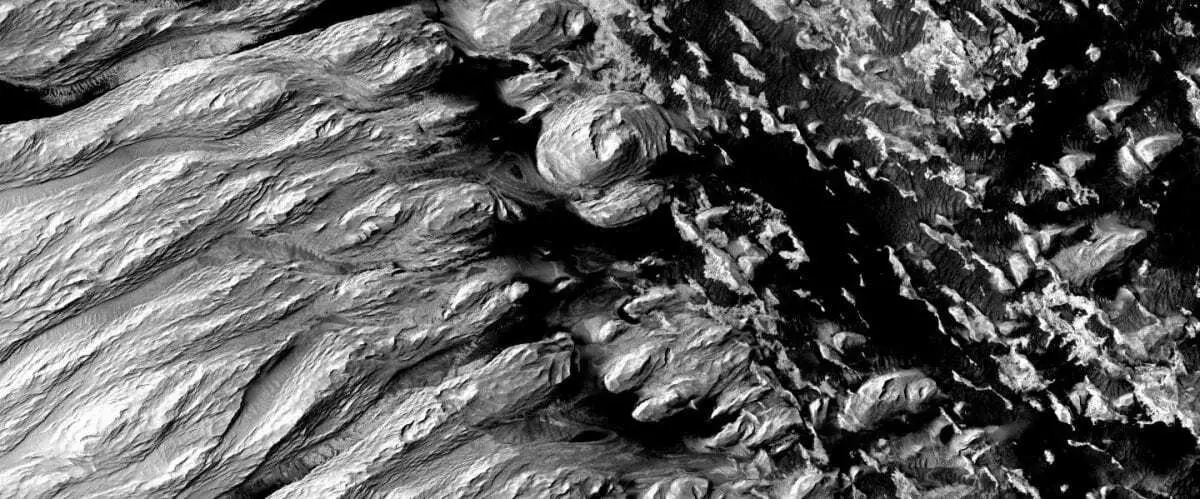The dust that coats much of the surface of Mars originates largely from a single thousand-kilometer-long geological formation near the Red Planet’s equator, scientists have found.
A study published in the journal Nature Communications found a chemical match between dust in the Martian atmosphere and the surface feature, called the Medusae Fossae Formation.
“Mars wouldn’t be nearly this dusty if it wasn’t for this one enormous deposit that is gradually eroding over time and polluting the planet, essentially,” said co-author Kevin Lewis, an assistant professor of Earth and planetary science at the Johns Hopkins University.
In the film The Martian, a dust storm leads to a series of events that strands an astronaut played by actor Matt Damon. As in the movie, dust on Mars has caused problems for real missions, including the Spirit Mars exploration rover. The fine, powdery stuff can get into expensive instruments and obscure solar panels needed to power equipment.
On Earth, dust is separated from soft rock formations by forces of nature including wind, water, glaciers, volcanoes and meteor impacts. For more than 4 billion years, however, streams of water and moving glaciers have likely made but a small contribution to the global dust reservoir on Mars. While meteor craters are a common feature on the fourth planet from the sun, the fragments created by the impacts typically are bigger than the fine particles that comprise Martian dust.
“How does Mars make so much dust, because none of these processes are active on Mars?” said lead author Lujendra Ojha, a postdoctoral fellow in Lewis’ lab. Although these factors may have played a role in the past, something else is to blame for the large swathes of dust surrounding Mars now, he said.
Ojha and the science team looked at the dust’s chemical composition. Landers and rovers far apart on the planet have all reported surprisingly similar data about the dust. “Dust everywhere on the planet is enriched in sulfur and chlorine and it has this very distinct sulfur-to-chlorine ratio,” Ojha said.
They also studied data captured by the spacecraft Mars Odyssey, which has orbited the planet since 2001. Ojha and his colleagues were able to pinpoint the MFF region as having an abundance of sulfur and chlorine, as well as a match to the ratio of sulfur to chlorine in Mars dust.
Earlier findings suggest that the MFF had a volcanic origin. Once 50 percent of the continental United States in size, the wind has eroded it, leaving behind an area that’s now more like about 20 percent. Yet it is the largest known volcanic deposit in our solar system.
Wind-carved ridges known as yardangs are the remnants of erosion. By calculating how much of the MFF has been lost over the past 3 billion years, the scientists could approximate the current quantity of dust on Mars, enough to form a 2 to 12 meters thick global layer.
Dust particles can also affect Martian climate by absorbing solar radiation, resulting in lower temperatures at the ground level and higher ones in the atmosphere. This temperature contrast can create stronger winds, leading to more dust being lifted from the surface.
While seasonal dust storms happen every Martian year (twice as long as an Earth year), global dust storms can form about every 10 or so years.
“It just explains, potentially, one big piece of how Mars got to its current state,” Lewis said.
JOHNS HOPKINS UNIVERSITY
Header Image – A portion of the Medusae Fossae Formation on Mars showing the effect of billions of years of erosion. The image was acquired by the High Resolution Imaging Science Experiment (HiRISE) camera onboard the Mars Reconnaissance Orbiter. Credit : NASA/JPL/University of Arizona







